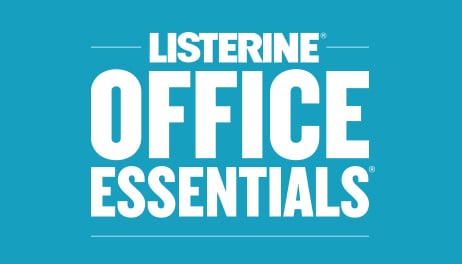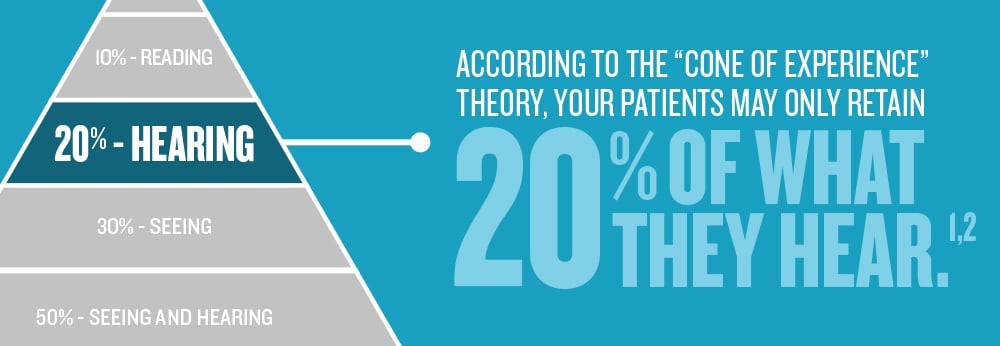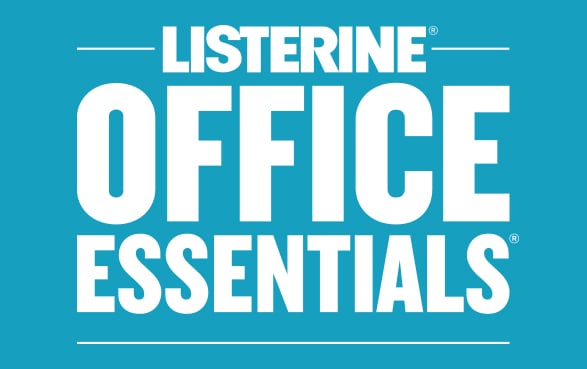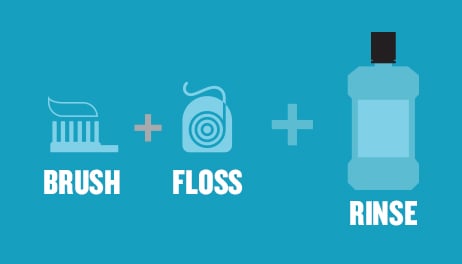
Licensed professionals can receive the latest Listerine clinical information and patient resources.

TIPS FOR EVEN MORE EFFECTIVE PATIENT COUNSELING.
In the 1960s, a popular theory was taught that surmised that people only retain about 20% of what they hear.1,2 This theory was popularized long before the advent of today’s modern world of smartphones and fragmented media that has led to over-multitasking and dramatically decreased attention spans. One can only imagine how little people retain today. And that means it’s even more important now to ensure that your communication skills are the best they can possibly be. Communication is a key to success in a service business like Dentistry—so below are some tips on how you can increase the percentage of what your patients retain after they leave your chair.

More active listening.
As you may know, effective communication actually begins with listening. To truly listen is an important skill to practice, because it demonstrates that one is absorbing what is being said. Called “Active Listening,” this skill is one that actually takes more effort than many think—as it requires paying attention to not only the speaker’s words, but also to their nonverbal cues, such as gestures, facial expressions, and body language. Simultaneously, it’s also helpful to resist any urge to internally judge or criticize the speaker’s delivery, point of view, or perception of facts. Maintaining good eye contact, while providing nods and other affirmative gestures, goes a long way to establishing a trusting, two-way relationship with your patient. It’s also a good practice to refrain from interrupting, and instead focus on what is being said, rather than what is not being said. A skillful active listener withholds judgment about the message, and always pauses and thinks carefully before offering a response—knowing well that you can’t take back a comment you wish you hadn’t made, once you’ve made it.3
Thoughtful responses.
When it is time to respond to a patient, proficient patient communicators try to always:
- Use a gentle tone of voice.
- Infuse their statements with empathy.
- Validate their patient’s feelings.
Try to remember that a feeling isn’t right or wrong, it is simply the truth about how their patient is feeling. Even when they don’t agree with what the patient is saying, the ideal communicators still show that they understand and respect what they have said, and how they feel. As a rule, they treat their patient with respect, compassion, and candor at all times. And they take care to always be clear, concise, and considerate.3
Technology is your friend.
One of the main goals of all dental health practitioners is to get their patients to take ownership and action in the treatment and care of their own oral health. Achieving this requires instilling a sense of urgency into conversation with them. For example, in the past you may have asked your patients to look into a dental mirror as you attempted to describe a problem or what needs to be done about it. But with today’s technology, it is much easier to express your point of view with incredible accuracy and clarity. If a picture is worth a thousand words, a digital photo must be worth a million.4
Here’s an example of effective chair-side communication4:
- Describe the problem as simply as possible, using available technology to show the patient exactly what you are talking about
- Clearly explain the source of the problem
- Discuss the treatment options
- Explain the consequences of delaying or ignoring treatment
Keep your sense of humor.
Nothing defuses a tense situation better than a touch of humor. So it’s desirable to keep the mood light and relaxed. Those that possess the ability to laugh, even at themselves, will put the patient at ease, and make them more receptive to understanding and retaining what is said to them—and the patient will be better able to articulate what they need to say in return.5
![]()
So there you have it—4 simple strategies for better patient communication:
- Be a more active listener.
- Respond more thoughtfully.
- Take full advantage of today’s available tools and technology, to remove any chance of doubt, misunderstanding, or mistrust.
- Have a little fun at the same time.
If you simply apply or improve upon any of these skills during your daily patient interactions, it can pay you back with dividends.
It’s been proven that improved communication skills lead to greater patient satisfaction. Which should lead to better retention and follow-through of your recommendations—and ultimately, a better chance of improving their oral health.
And that, of course, translates to greater satisfaction for you.5
We hope you found this article of value.
PREFERRED MEMBER PRICING ON LISTERINE® PRODUCTS.
Members are entitled to special offers and pricing on LISTERINE® products for their office.
GO BEYOND BRUSHING
Read why LISTERINE® products are an essential part of a complete oral care regimen.
EXPLORE OUR PRODUCTS.
Extend your care beyond appointments with the LISTERINE® family of products.
Patient Communication Tips Footnotes
References: 1. Northwood M, Northwood D, Northwood M. Problem-based learning (PBL): from the health sciences to engineering to value-added in the workplace. Global J Engng Educ. 2003;7(2):160. 2. Anderson HM. Dale’s Cone of Experience. Accessed December 14, 2015. 3. Breen C. Tips to enhance effective communications skills for the dental assistant. DentistryIQ. https://www.dentistryiq.com/practice-management/article/16358166/six-ste.... Accessed December 14, 2015. 4. Little D, Poole J. Faster, better ways to communicate with your patients. Dental Economics. http://www.dentaleconomics.com/articles/print/volume-98/issue-1/features.... Accessed December 14, 2015. 5. Levin R. 10 tips for improving your communication skills. DentistryIQ. https://www.dentistryiq.com/practice-management/article/16358166/six-ste.... Accessed December 14, 2015.







All Fields required, unless otherwise indicated
Personal Information
Step 1
Will be used as your user name
By submitting your information above, you agree that the information you provide will be governed by our site's Privacy Policy.